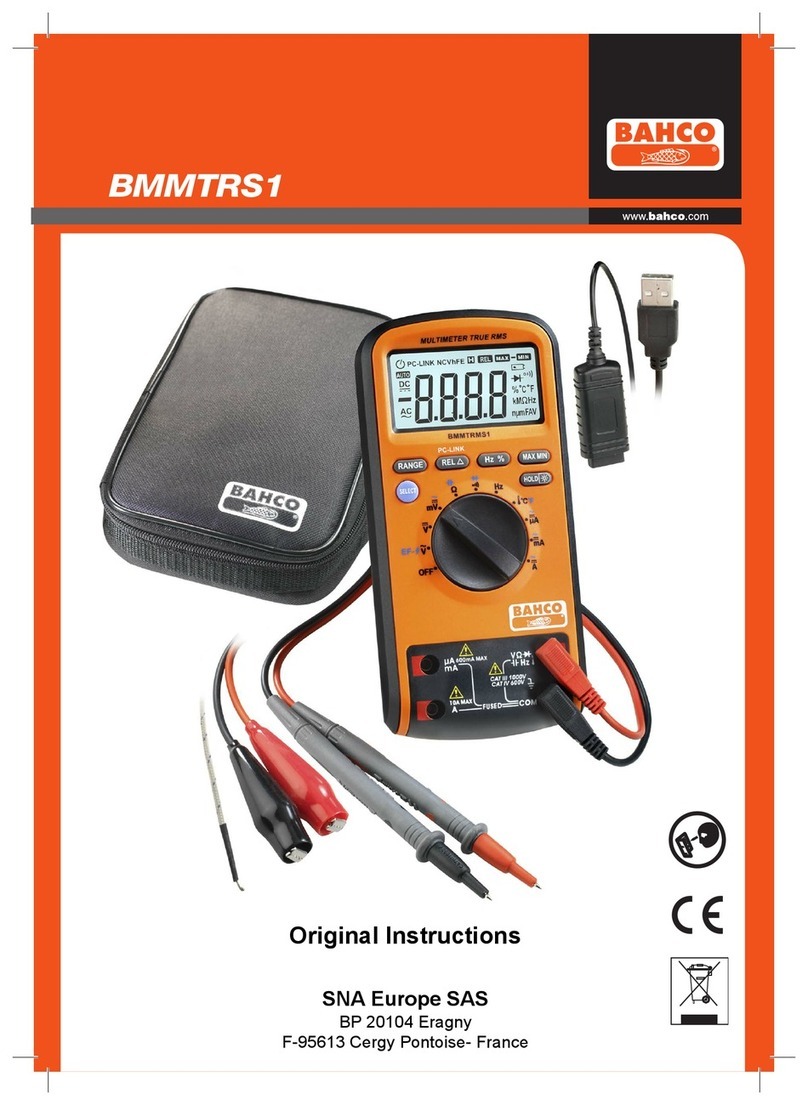
2
BMMTRS1
1. GENERAL INSTRUCTIONS ................................ 3
1.1 Precaution safety measures .............................. 3
1.1.1 Preliminary ............................................................ 3
1.1.2 During use ............................................................. 3
1.2 Symbols ............................................................... 4
1.3 Instructions ......................................................... 5
2. DESCRIPTION ..................................................... 5
2.1 Instrument Familiarization ................................. 5
2.2 LCD Display ......................................................... 6
2.3 Key pad ................................................................ 7
3. FUNCTION DESCRIPTION .................................. 7
3.1 General Functions .............................................. 7
3.1.1 DATA HOLD mode ................................................ 7
3.1.2 Manual ranging and Auto-range mode .................. 8
3.1.3 Battery saver ......................................................... 8
3.1.4 Relative measurement mode ................................ 8
3.1.5 True RMS measurement ....................................... 8
3.2 Measurement Functions ..................................... 8
3.2.1 AC and DC Voltage measurement ........................ 8
3.2.2 Resistance measurement ..................................... 9
3.2.3 Capacitance measurement ................................... 10
3.2.4 Continuity Check ................................................... 11
3.2.5 Diode Test ............................................................. 12
3.2.6 Frequency measurement ...................................... 13
3.2.7 Temperature measurement ................................... 13
3.2.8 Current measurement ........................................... 14
3.2.9 NCVhEF ................................................................ 15
3.2.10 PC Link ................................................................. 15
4. TECHNICAL SPECIFICATIONS .......................... 15
*HQHUDOVSHFL¿FDWLRQV ........................................ 15
0HDVXUHPHQWVSHFL¿FDWLRQV .............................. 16
4.2.1 Voltage .................................................................. 16
4.2.2 Frequency ............................................................. 17
4.2.3 Resistance ............................................................ 17
4.2.4 Diode Test ............................................................. 17
4.2.5 Continuity Check ................................................... 18
4.2.6 Capacitance .......................................................... 18
4.2.7 Temperature .......................................................... 18
4.2.8 Current .................................................................. 18
5. MAINTENANCE ................................................... 19
5.1 General maintenance .......................................... 19
5.2 Fuse replacement ............................................... 20
5.3 Battery replacement ........................................... 20
6. ACCESSORIES .................................................... 20
ENGLISH
Contents






























